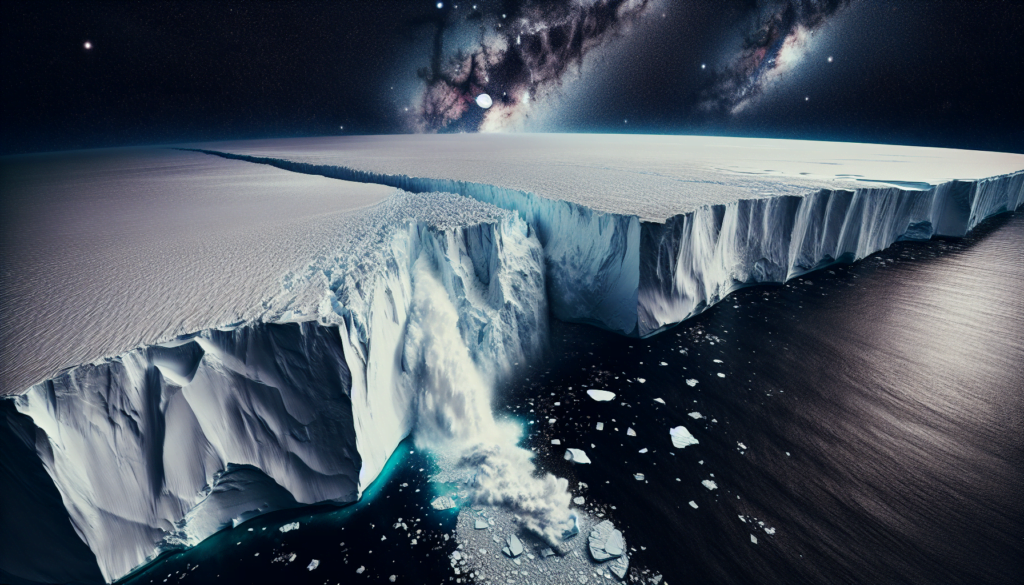Contents
The Antarctic ice shelves serve as crucial barriers against the impact of rising sea levels. However, the escalating effects of climate change have put these vast ice expanses at risk, potentially accelerating the pace at which our oceans rise. Understanding their role and the threats they face is essential for grasping the broader implications of global warming.
Introduction to Antarctic Ice Shelves
Ice shelves are thick platforms of ice that form where glaciers and ice sheets meet the ocean. In Antarctica, these shelves act as buffers, restraining the flow of ice from the continent into the sea. The largest and most notable include the Ross Ice Shelf, the Filchner-Ronne Ice Shelf, and the Larsen Ice Shelf.
The Role of Ice Shelves
Ice shelves play a critical role in stabilizing the Antarctic Ice Sheet. They achieve this by exerting back pressure on the glaciers feeding into them, thereby slowing the rate at which ice flows into the ocean. Without these natural barriers, the Antarctic glaciers would lose their resistance, leading to faster ice discharge and, consequently, more significant contributions to sea level rise.
Climate Regulation
Apart from regulating sea levels, ice shelves also have a broader impact on global climate systems. They help in maintaining the Earth’s energy balance by reflecting a significant portion of solar radiation back into space. As they melt, the dark ocean surfaces that replace them absorb more heat, creating a feedback loop that can exacerbate global warming.
Threats Facing Ice Shelves
The potential collapse of ice shelves primarily stems from two interlinked processes: atmospheric warming and oceanic warming. Both processes have been accelerating in recent years due to anthropogenic climate change.
Atmospheric Warming
Increasing atmospheric temperatures lead to surface melting on ice shelves. During warmer months, meltwater can pool in large quantities on the surface, and these pools can enlarge existing fractures or create new ones. This process, known as hydrofracturing, can cause significant stress on the ice structure, leading to eventual collapse.
Oceanic Warming
The warming of ocean waters is perhaps the most insidious threat to the integrity of ice shelves. Warm water currents can reach the base of the ice shelves, melting them from below. This under-ice melting is less visible but can weaken the ice shelves much faster and more extensively than surface melting.
Case Studies: Major Ice Shelf Events
Larsen Ice Shelf Collapse
One of the most dramatic examples of ice shelf collapse is the disintegration of the Larsen B Ice Shelf in 2002. Within just a few weeks, a region of ice approximately the size of Rhode Island crumbled into the sea. This event highlighted the rapid and potentially catastrophic nature of ice shelf disintegration.
Ross Ice Shelf Stability
In contrast, the Ross Ice Shelf, the world’s largest, has shown more resilience. However, recent studies indicate that even this massive ice shelf is not immune to the effects of climate change, with signs of thinning and enhanced melting at the base observed.
Implications for Global Sea Levels
The complete loss of Antarctic ice shelves would have profound implications for global sea levels. Some estimates suggest that the melting of the West Antarctic Ice Sheet, facilitated by the loss of ice shelves, could contribute to several meters of sea level rise over the next few centuries. Such an increase would have catastrophic effects on coastal communities worldwide.
Conclusion
Antarctic ice shelves are indispensable shields in the fight against rising sea levels. Their preservation is crucial for maintaining global sea levels and climate stability. Addressing the root causes of climate change through international cooperation and stringent environmental policies is necessary to protect these natural defenses. In the coming decades, the fate of Antarctic ice shelves will likely serve as a clear indicator of the success or failure of our collective climate efforts.

